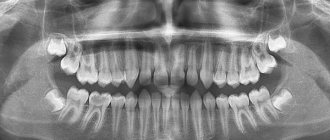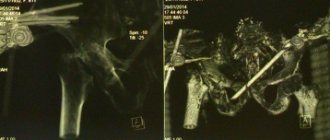Basic oral hygiene products
The main means of oral hygiene primarily include toothbrushes, the varieties and configuration of which we will consider below:
Toothbrushes
There are two types of these devices: conventional (manual) and electric. Regardless of what type of toothbrush it is, one of the main criteria for choosing it is the bristles.
Bristles by degree of hardness
- Hard (super hard). It is used strictly on the recommendation of a dentist and is especially suitable for people susceptible to excessive tartar formation. In addition, stiff bristles may be suitable for cleaning dentures;
- Medium hardness. It is considered a classic option, suitable for almost everyone without any restrictions. It is also well suited for the care of orthodontic structures and dentures;
- Soft. Recommended for use by children, as well as people suffering from bleeding gums and increased sensitivity of tooth enamel;
- Super soft. The use of such toothbrushes may be recommended by the attending physician based on the individual characteristics of the patient.
The bristles of toothbrushes are
- Natural. Made from animal guard hair. The main disadvantage of such bristles is their rapid wear and tear;
- Synthetic. Made from safe synthetic materials. It is distinguished by its long-term preservation of its qualities and ease of processing, guaranteeing the removal of contaminants after use.
In addition to the above, it is worth paying attention to the configuration of the bristles:
- Beveled with a slope. Allows you to most thoroughly remove plaque, including from the distant molars;
- Multi-level bristles. Allows you to remove food particles and plaque not only from the surface of the teeth, but also from the interdental crevices;
- Collected in bunches. Allows you to increase the coverage area, which also includes the necks of the teeth.
In addition to the main selection criteria listed above, it is also worth paying attention to the size of the cleaning head and its mobility. Movable heads are suitable for people who should avoid excessive pressure on teeth, gums, or orthodontic structures installed in the oral cavity to avoid damage.
Choosing an Electric Toothbrush
In addition to the main criterion, which is bristles, when choosing an electric toothbrush, you need to pay attention to:
- The shape of the cleaning head. They are round and elongated;
- Ability to change speed modes;
- Possibility of changing the direction of rotation;
- Mode type: ultrasonic, sonic, or ionization.
It is worth noting that it is advisable to use an electric toothbrush only after prior consultation with a dentist, who will help you choose the most suitable option.
Regardless of the type of toothbrush, replacement with a new one is carried out no later than 3 months from the start of use. Manual brushes must be completely replaced, and for electric brushes, the cleaning attachment must be replaced.
Toothpastes
All toothpastes are divided into three main groups:
- Hygienic. Designed for everyday oral hygiene;
- Therapeutic and prophylactic. The composition of such pastes includes components,
- Specialized. The use of this type of toothpaste is prescribed by the attending physician and is necessary to maintain the therapeutic effect achieved by the main treatment. The composition of such pastes includes medicinal components;
- Whitening. Pastes with a whitening effect contain abrasive particles and can whiten enamel by 1-1.5 tones. However, long-term use of whitening toothpastes is not recommended due to the risk of enamel damage.
Having a preventive and not pronounced therapeutic effect. As a rule, herbal preparations or formulations enriched with fluorine and calcium are used as specialized additives;
Putting drops into the eyes
- Before instillation, clean the eyes with a sterile cotton swab moistened with a solution of furatsilin 1:5000
- The pipette must be washed frequently and sterilized by boiling before use.
- drops must be sterile, since the introduction of non-sterile drops leads to infection of the eye
- drop temperature is room temperature;
- Do not use a pipette with a damaged tip;
- the end of the pipette should be rounded;
- Do not allow the medicinal solution drawn into the glass end of the pipette to fall into the rubber barrel of the pipette;
- When filling, the pipette should be held strictly vertically;
- drops are instilled into the child's eyes with the participation of an assistant who holds the child in a lying position, while fixing his head, arms and legs;
- the nurse holds a pipette with a medicinal solution in her right hand, and with her left hand pulls back the lower eyelid; if the child has clenched his eyelids, he pushes them apart;
- with the fingers of the right hand, presses on the rubber balloon of the pipette and injects 1-2 drops of the medicinal solution into the conjunctival sac;
- do not drip onto the pupil area.
- remove excess moisture with a sterile cotton swab
Additional oral hygiene products
In addition to the main ones, there are also additional oral hygiene products , in combination with which you can fully care for the health of your teeth and gums.
Dental floss
Dental floss is a means for daily use, but cannot act as a replacement for a toothbrush. The main function of floss is to remove food debris and soft plaque from the interdental spaces. Although dental floss is not a basic means of hygiene, its importance cannot be underestimated, since its use is an important factor in the prevention of caries. Accumulating in interdental spaces inaccessible to a toothbrush, food debris and dental plaque become a favorable environment for the accumulation of bacteria, which in turn leads to the development of caries. This is why flossing is most important after meals, or in cases where a toothbrush is not available. Types of dental floss:
- Round. Universal floss, suitable for interdental gaps of any size;
- Flat. Necessary for people with tightly-fitting teeth and, accordingly, narrow spaces between dental units;
- Tape. Universal threads, but their use is most advisable in case of large distances between teeth;
- Volumetric. They are characterized by the ability to swell under the influence of saliva, which makes them most productive in terms of removing contaminants.
In addition to the above, dental flosses have differences in the impregnation applied to them. There is a wide variety of processing compounds aimed at:
- Facilitation of thread sliding (waxing);
- Elimination of unpleasant odor and creation of aftertaste (menthol);
- Disease prevention (fluoridated);
- Elimination of bacteria (antiseptic).
However, it is necessary to take into account that despite the large number of advantages, dental floss also has a number of contraindications. Thus, their use is not advisable for people who have orthodontic structures, increased bleeding gums or advanced forms of caries.
Irrigators
An irrigator is a device that cleanses the oral cavity using a pulsating stream of water directed under high pressure. Types of irrigators:
- Portable. They are battery operated and have a pressure control function;
- Stationary. Attached directly to the wall, or any horizontal surface;
- Flow-through. They work by connecting to the water supply system.
- Mechanical. The work is carried out by a pump that pumps up water.
The pressure is adjusted using the water supply valve;
It must be taken into account that the irrigator is not a replacement for a toothbrush, but is an auxiliary one. The use of an irrigator will be most appropriate for people who have orthodontic structures installed and increased gum bleeding. The latter is related to the massaging ability of the irrigator.
Chewing gum
The use of chewing gum as a means of oral hygiene will be justified only if it is done without abuse. It is important to know that chewing gum can be both beneficial and harmful. Dentists recommend chewing gum for no more than 5 minutes and strictly after eating. In this case, chewing gum will help:
- Remove food residues;
- Stimulate digestion and the production of saliva, which is a natural cleanser and eliminates a number of bacteria from the oral cavity;
- Freshen your breath. It is worth remembering that chewing gum does not fight the unpleasant odor, the source of which is most often bacteria, but only masks it;
- Provide a massaging effect on the gums;
- Create a relaxing effect that reduces excitability.
Uncontrolled and prolonged use of chewing gum can lead to a number of negative consequences:
- Periodontal fatigue;
- Thinning of tooth enamel;
- Overstrain of masticatory muscles and ligaments;
- Disturbances in the functioning of the gastrointestinal tract;
- Ingestion of bacteria removed from the surface of the teeth.
Rinse aids and foams
These products help to consolidate the results achieved by cleaning with a toothbrush. These products not only freshen breath, but are also able to create a thin protective film on the surface of the teeth that prevents the accumulation of bacteria. Thus, the use of these products is not an alternative to a toothbrush or floss, but it is advisable to use them after every meal and before bed.
Despite the presence of a large number of modern oral hygiene products available in everyday life, at least once a year it is necessary to visit a dentist who will carry out professional teeth cleaning. Even regular use of the hygiene products listed above cannot guarantee the absence of the formation of hard dental plaque, which only a doctor can remove.
The second horror story about dental hygiene is toothless
Now I’ll tell you a horror story about how you can end up losing your teeth.
Let's come up with an average male hero. Well, let’s say we have the character Vasya. And let our dear Vasily not brush his teeth.
And he doesn’t brush his teeth for a day or two. Food remains between the teeth and in those places where we clean and cannot reach, but this Vasya does not do even that. Slowly the tooth becomes overgrown with soft and hard plaque.
The problem arises: how to start monitoring dental hygiene?
If you do not start solving the problem, the process begins to develop as follows.
Do you know when oxidation occurs in the oral cavity? Hard plaque goes deep under the gum and decomposes. Remains of food remain under the gum for a long, long time. This dental plaque, these microorganisms - they actually already live under the gums and feed on everything “delicious”. The products of their vital activity, and this is nothing more than acid, oxidize the environment in the oral cavity.
In turn, this has a negative effect on the enamel, it is destroyed and becomes susceptible to caries, and not only caries, but also all other pathologies.
And now there is bad breath
I don’t think it’s pleasant for Vasily to walk and communicate, because there is such a thing as halitosis. Halitosis is bad breath. It can be of gastrointestinal origin, of course - this is when there are certain diseases of the gastrointestinal tract, and a person has such an unpleasant odor from his mouth (you can’t call it a smell, rather it’s more of an evaporation). Or this is due to the fact that our Vasya does not brush his teeth at all.
I don’t know how Vasily kisses girls either. No, well, maybe the girl is the same - yes, but history is silent about this. Well, okay, we won’t scold Vasily, he needs to somehow start taking care of his oral cavity more often. So that later there will be no problems with courting girls 
And finally, our Vasily developed tartar
Tartar disrupts the dentogingival attachment and also disrupts the cement of the tooth root, and due to this, the tooth is kept in the socket and the tooth becomes mobile. There are two possible outcomes: either it’s periodontitis or it’s periodontal disease.
The peculiarity of hygiene in patients suffering from periodontal disease with teeth susceptible to the cariogenic process is a separate conversation. In patients suffering from periodontitis, of course, everything is much worse. Teeth become loose and eating becomes more difficult. As a result, teeth are lost one by one.
Professional teeth cleaning at the dentist
Professional teeth cleaning includes:
- Removal of hard dental plaque using an ultrasonic device or laser;
- Lightening of tooth enamel using modern gentle AIRFLOW technology;
- Polishing enamel using professional products;
- Treatment with fluoridating compounds that strengthen the enamel;
- Sealing of fissures using resins. This procedure is necessary to protect teeth from carious lesions.
It is important to remember that a healthy oral cavity is not only an aesthetically attractive appearance, but also a guarantee of the health of the body as a whole. Proper oral hygiene and regular visits to the dentist will help maintain the physiologically normal condition of teeth.
Putting drops in the ears
- clean the external auditory canal with a sterile cotton swab (if there is suppuration)
- warm the drops to body temperature, for which the bottle is placed in water at a temperature of 37.2-37.3 C
- place the child on the healthy side;
- to straighten the external auditory canal in a young child, the earlobe is pulled slightly downwards with the left hand, and in older children the auricle is pulled upward and backward;
- holding the pipette in a vertical position in the right hand, 5-6 drops of the medicinal solution are injected into the ear;
- after administering the drops, press the tragus several times so that the drops enter the middle ear; — place a cotton swab in the ear for 15-20 minutes;
- after administering the drops, the child must be kept in a lying position on his healthy side or back with the sore ear turned upward for 15-20 minutes;
- If drops are prescribed in both ears, it is not recommended to carry out this manipulation simultaneously.









